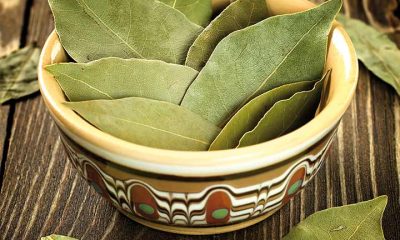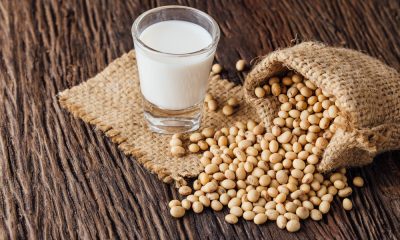Health
7 Benefits of potassium rich foods

Discover the 7 shocking health benefits of potassium rich foods.
There are many reasons why you should make sure to eat an adequate amount of potassium-rich foods daily, potassium is an essential nutrient used to maintain fluid and electrolyte balance in the body, it is also the third most abundant mineral in the body.
The body and a mineral required for the function of various organs, including the heart, kidneys, brain, and muscles; The benefits of potassium-rich foods also play an important role in keeping the body hydrated and works with sodium to support cellular function with your body’s sodium and potassium pump.
Low potassium symptoms, also known as hypokalemia, are highly undesirable and can include severe headaches, dehydration, heart palpitations, and swollen glands and tissues.
Potassium from natural food sources, such as the list of potassium-rich foods below, is considered very safe and very healthy, the current recommended dietary intake for male and female adults is 4,700 milligrams of potassium per day.
If that sounds like a lot, it’s because it is, and many people have trouble getting as much potassium as they should daily.
Using the table of foods rich in potassium that we are about to provide you, you can know what kinds of foods you need to eat regularly to meet your requirements and avoid a deficiency.
As an alkaline mineral and electrolyte, you don’t want to miss the mark when it comes to your potassium intake.
Benefits of foods rich in potassium
1.- Benefits of potassium rich foods for heart
One thing that makes a healthy heartbeat as it should, we are talking about your heart rate, and the benefits of potassium-rich foods play a direct role in ensuring that the rate is healthy and as it should be.
If you have problems with your heart rhythm, a potassium deficiency could play a role.
2.- Reduce cramps
One of the main benefits of foods rich in potassium is the reduction of muscle cramps and the improvement of muscle strength. Muscle weakness, muscle aches, and muscle cramps are common side effects of low potassium levels.
This can happen if an athlete becomes dehydrated and does not consume enough potassium-rich foods before and after exercise; Potassium is also helpful for cramps related to premenstrual syndrome (PMS).
3.- Reduce the risk of stroke
Several observational studies have found that those with high potassium levels experience a lower risk of stroke.
The risk of ischemic stroke, in particular, is lower in high-potassium consumers, the positive relationship between increased intake of the benefits of high-potassium foods and decreased risk of stroke is believed to come from sources rather than supplements, which do not seem to provide the same positive effect.
4.- Benefits of potassium rich foods for high blood pressure
According to a recently updated publication from Harvard Medical School, “the average American diet produces too much sodium and too little potassium,” which is highly counterproductive when it comes to discouraging high blood pressure; Studies show that a diet high in potassium, especially potassium from fruits and vegetables, lowers blood pressure.
This is especially true if the increase in potassium foods is not accompanied by an increase in foods high in sodium; One group that you shouldn’t aim too high for with potassium intake is people with kidney problems.
5.- Low appearance of cellulite
One of the main factors causing the accumulation of cellulite is fluid retention, most people consume too much sodium and do not have enough potassium, sodium provides nutrients to cells where potassium helps eliminate excess waste from the cells.
For this reason, if you reduce your sodium intake and start consuming foods rich in potassium, you can reduce the appearance of cellulite.
6.- Benefits of potassium rich foods for osteoporosis
Research has found a direct relationship between increased bone density and increased intake of the benefits of potassium-rich foods in the diet.
Citrate and bicarbonate are two potassium salts naturally found in potassium-rich fruits and vegetables, and a recent study reveals that these potassium salts can improve your bone health and prevent osteoporosis.
This 2015 study from the University of Surrey published in the journal Osteoporosis International found that high consumption of potassium salts significantly decreases urinary acid and calcium excretion.
Why is this significant? Because the potassium salts help the bones not to reabsorb acid and also to maintain a vital mineral content.
Therefore, by consuming potassium-rich fruits and vegetables, you can help preserve your bones and prevent serious bone-related health problems such as osteoporosis.
7.- Proper food processing and growth
Your body needs potassium to process and use the carbohydrates you eat, like a child or an adult, you also need potassium to build protein and muscle.
If you are younger and your body is still growing, the benefits of foods rich in potassium help ensure that your growth continues at a normal and healthy rate.
Top 10 Potassium Rich Foods
What foods are rich in potassium? There are many potassium-rich foods to choose from to meet your daily needs, this list includes some of the most potassium-rich foods out there. Yogurt also has a high concentration of potassium, below is a list of foods rich in potassium:
• Avocado: One Whole: 1,067 milligrams (30 percent DV) Avocado is one of my favorite potassium-rich foods; a study of epidemiological data from 2001 to 2008 describing the effects and benefits of avocado consumption on risk factors for metabolic disease.
Overall, the researchers found that people who ate avocados tended to have healthier diets overall, as well as higher nutrient intake and a lower likelihood of developing metabolic syndrome.
• Acorn Squash: 1 cup: 896 milligrams (26 percent DV) Acorn squash is a plant-based source of potassium that really should be more popular than it is, as it also contains high levels of antioxidants.
Most impressive are the carotenoids contained in a single serving of pumpkin. This type of antioxidant is known to help prevent and fight various types of cancer, including skin, breast, lung, and prostate cancer.
• Spinach: 1 cup cooked: 839 milligrams (24 percent DV) There’s a reason spinach was the cartoon character Popeye chose as his energy food.
Not only is spinach a food rich in potassium, but scientific research has shown that spinach contains plant glucoglycerolipids chloroplasts, which are believed to act as cancer-fighting agents.
• Sweet potato: 1 large: 855 milligrams (24 percent DV) Sweet potatoes are a high-potassium food that contains a higher density of nutrients than white potatoes. Sweet potatoes are also high in beta-carotene, vitamin C, and vitamin B6.
Additionally, sweet potatoes have been shown in scientific research in animals to show anti-ulcer activity and are likely to be helpful in the successful treatment of peptic ulcers.
• Wild-caught salmon: ½ fillet: 772 milligrams (22 percent DV) In addition to potassium, as well as other vitamins, minerals, and proteins, wild salmon is loaded with health-promoting omega-3 fatty acids.
The benefits of these essential fatty acids include lowering the risk of heart disease and stroke while helping to reduce symptoms of depression, high blood pressure, attention deficit hyperactivity disorder, joint pain, and chronic ailments of the skin like eczema.
• Dried apricots: ½ cup: 756 milligrams (22 percent DV) Dried apricots provide a quick and easy way to add potassium to your diet.
Epidemiological studies have shown that people who eat dried apricots and other dried fruits tend to have a healthier overall diet with more nutrients and lower body weight; in moderation, dried fruit can be a healthy option, and in this case a high-potassium snack.
• Pomegranate: 1 whole: 667 milligrams (19 percent DV) Pomegranate seeds and their juice are incredible sources of potassium. They are also loaded with fiber, vitamin C, and vitamin K, among other nutrients.
In addition to this list of potassium-rich foods, pomegranate also falls on other lists as the top 10 aphrodisiac foods due to its ability to reduce cortisol levels in the body. Pomegranate juice has also been found to be the healthiest fruit juice in the world.
• Coconut water: 1 cup: 600 milligrams (17 percent DV) Looking for more potassium-rich foods that come in liquid form? I like to include coconut water on this list because when you choose right (no added sugars), you have a drink option that is high in electrolytes like potassium but not too high in sugar or calories. Coconut water has even been used in emergencies as an IV hydration fluid.
• White beans: ½ cup: 502 mg (15 percent DV) White beans not only contain a significant dose of potassium per serving, but they are also rich in fiber.
According to the Mayo Clinic, eating high-fiber foods like white beans helps reduce the risk of diabetes and heart disease. High-fiber diets also promote a healthy waistline.
• Banana: 1 large: 487 milligrams (14 percent DV) Bananas are well known for being a source of potassium and are good, but they are also relatively high in sugar and carbohydrates.
That’s why I recommend bananas as a quick energy source before a workout or a nutrient-dense post-workout recovery food to help repair muscles and balance water retention.
Exercising, especially vigorous exercise, is one of the main ways that potassium levels can be depleted, which is why it is crucial to consume foods rich in potassium like bananas.
Scientific research has also shown that bananas are rich in dopamine, one of the main hormones that improve mood.
Dangers of low potassium levels
Your body continually performs a balancing act between two electrolytes: potassium and sodium, when sodium levels go up, potassium levels go down, and when sodium levels go down, potassium levels go up.
It is important not to overdo the sodium in your diet, while it is also crucial to maintain your potassium intake, so don’t hesitate to access the benefits of potassium-rich foods.
A potassium deficiency can lead to:
• Fatigue
• Irritability
• Muscle cramps
• Weight gain
• Blood pressure problems
• Heart palpitations
• Cellulite buildup
• Nausea
• Arthritis
• Abdominal cramps, bloating
• Abnormal psychological behavior, including depression, confusion, or hallucinations
The main culprits that can cause hypokalemia are resistance to cardiovascular exercise without adequate hydration, vomiting, diarrhea, and a diet low in fruits and vegetables.
Other causes of suboptimal potassium levels include poor kidney function, blood pH, and hormone levels.
Medications such as diuretics and laxatives can also cause potassium levels to be very low, so it is important to ensure the benefits of potassium-rich foods for your body.
Unless you are on dialysis, receiving cancer treatment, or have another special condition, it is rare for you to overdose on potassium from natural sources; however, it is possible to consume too much potassium through potassium salts, such as potassium chloride, which can lead to nausea and vomiting.
This condition is known as hyperkalemia, which occurs when potassium levels are high; hyperkalemia is related to psoriasis.
Minimum amount of potassium that should be received per day
According to the Food and Nutrition Center of the Institute of Medicine, the recommended daily intake for potassium is:
• Babies 0-12 months: 400-700 milligrams per day
• Children 1-8 years: 3,000-3,800 milligrams per day
• Adolescents 9 to 18 years: 4,500-4,700 milligrams per day
• Adults 19 years of age and older, men and women: 4,700 milligrams per day
• Pregnant or lactating women: 5,100 milligrams / day
Athletes who train for more than an hour on most days may need even more potassium, and intake varies based on muscle mass, activity levels, and more.
Final thoughts
• There is no doubt that potassium is an essential part of a healthy diet. Not only is it an essential mineral, but it is also an electrolyte.
With this dual identity comes a host of benefits from potassium-rich foods when you consume enough regularly; The opposite is also true.
If you don’t get enough potassium in your diet regularly, then you open yourself up to a host of unwanted potassium deficiency symptoms, including kidney problems and more.
Hopefully, this list of potassium-rich foods will help you see that bananas aren’t your only option when it comes to getting your daily potassium fix.
There are many fruits and vegetables, and even fish, that rank even higher than bananas when it comes to the content of this vital mineral.
There are so many delicious potassium-rich foods that can be eaten alone or in healthy recipes, making it easy not to fall short in the potassium department
Health
Benefits of pomegranate juice
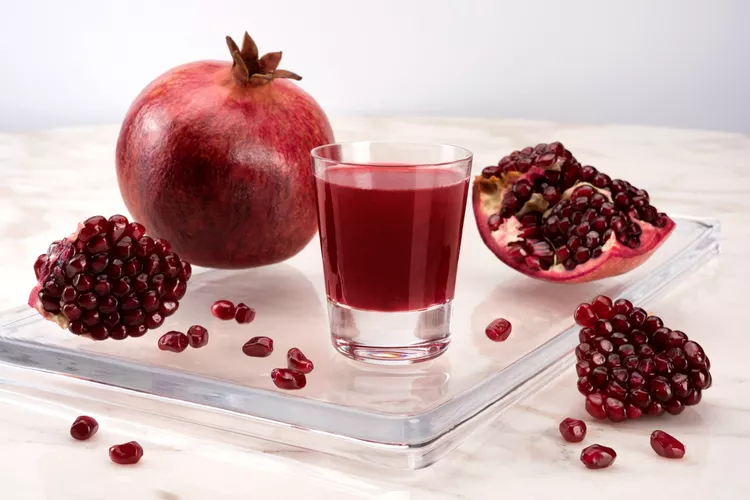
Discover the benefits of pomegranate juice.
Frequent consumption of pomegranate juice can help us prevent multiple ailments and promote better blood circulation.
Drinking natural juices is good for our health. Surely you have read or heard this statement often. Among them, a very beneficial one is pomegranate juice.
Although all fruits are nutritious, each one has its properties. Here we will tell you about the benefits of pomegranate juice.
The tree that provides us with this delicious fruit is the pomegranate. It blooms between April and June and can survive up to 1,100 meters high.
It is native to Asia but today it is also planted near the Mediterranean Sea, South America, Australia, and South Africa.
Traces of the use of the pomegranate by the peoples of desert areas have been found since it was preserved for quite some time.
For example, in Greece, it is said that the first tree was planted by Aphrodite. In Java the fruit is used in pregnancy rituals and in China it is offered to newlyweds to guarantee great offspring.
1. Antioxidants
Pomegranates have been consumed throughout history for their medical benefits. Today, the juice of this fruit is a popular part of healthy diets.
Pomegranate seeds get their bright red color from polyphenols. These chemicals are powerful antioxidants.
Pomegranate juice contains higher levels of antioxidants than most other fruit juices. It also has three times more antioxidants than red wine and green tea. The antioxidants in pomegranate juice can help scavenge free radicals, protect cells from damage and reduce inflammation.
2. Vitamin C
The juice of a single pomegranate has more than 40% of your daily vitamin C requirement. Vitamin C can break down when pasteurized, so choose homemade or fresh pomegranate juice to get the most nutrients.
3. Cancer prevention
Pomegranate juice caused a sensation when researchers found that it could help stop the growth of prostate cancer cells. Despite multiple studies on the effects of juice on prostate cancer, the results are still preliminary.
Although there have been no long-term human studies proving that pomegranate juice prevents cancer or reduces risk, adding it to your diet doesn’t hurt. There have been encouraging results in the studies so far, and larger studies are now underway.
4. Protection against Alzheimer’s disease
The antioxidants in the juice and their high concentration are believed to stop the progression of Alzheimer’s disease and protect memory.
5. Digestion
Pomegranate juice can reduce inflammation in the intestines and improve digestion. It may be of benefit to people with Crohn’s disease, ulcerative colitis, and other inflammatory bowel diseases.
Although there are conflicting beliefs and research about whether pomegranate juice helps or worsens diarrhea, most doctors recommend avoiding it until you feel better and your symptoms have resolved.
6. Anti-inflammatory
Pomegranate juice is a powerful anti-inflammatory due to its high concentration of antioxidants. It can help reduce inflammation throughout the body and prevent oxidative stress and damage.
7. Arthritis
The flavonols in pomegranate juice may help block inflammation that contributes to osteoarthritis and cartilage damage. Possible effects on osteoporosis, rheumatoid arthritis, and other types of arthritis and joint inflammation are currently being studied.
8. Heart disease
Pomegranate juice might be the most heart-healthy juice. It protects the heart and arteries.
Small studies have shown that the juice improves blood flow and prevents arteries from becoming stiff and thin. It can also reduce the growth of plaque and cholesterol buildup in the arteries. However, pomegranate may react negatively with blood pressure and cholesterol medications such as statins.
Be sure to talk to your doctor before indulging in juice or taking a pomegranate extract supplement.
9. Blood pressure
Drinking pomegranate juice daily can also help lower systolic blood pressure. A comprehensive review of randomized controlled trials indicated that including pomegranate juice every day would be beneficial for heart health.
10. Antiviral
Between vitamin C and other nutrients that boost your immune system like vitamin E, pomegranate juice can ward off illness and fight infections. Pomegranates have also been shown to be antibacterial and antiviral in laboratory tests. Its effects on common infections and viruses are being studied.
11. Rich in vitamins
In addition to vitamin C and vitamin E, pomegranate juice is a good source of folate, potassium, and vitamin K.
Whether you decide to add pomegranate to your daily diet or just drink it occasionally, check the label to make sure it’s 100% pure pomegranate juice with no added sugar. Or, prepare it fresh.
12. Memory
According to a recent study, drinking 8 ounces of pomegranate juice daily can improve learning and memory.
13. Sexual performance and fertility
The concentration of antioxidants and the ability to affect oxidative stress make pomegranate juice a potential fertility aid. Oxidative stress has been shown to cause sperm dysfunction and decrease fertility in women.
The juice has also been shown to help reduce oxidative stress in the placenta. However, researchers do not yet know the exact benefits it may cause. Drinking pomegranate juice can also increase testosterone levels in men and women, one of the main hormones behind the sex drive.
14. Endurance and sports performance
Set aside the cherry pie and beetroot juice. Pomegranate juice may be the new sports performance booster. The juice can help reduce pain and improve stamina recovery. It also decreases oxidative damage caused by exercise.
15. Diabetes
Pomegranate was traditionally used as a remedy for diabetes in the Middle East and India. Although much is still unknown about the effects of pomegranate on diabetes, it may help lower insulin resistance and lower blood sugar.
Conclusion
Green juice isn’t the only healthy option out there. Adding pomegranate juice to your diet can reduce your risk of chronic disease and inflammation. It’s also a wonderful way to get the nutrients from the fruit and boost antioxidants.
There are several brands of pomegranate juice for purchase online. It is a good idea to compare the different products to choose the one with the greatest benefit.
It’s best to check with your doctor before drinking pomegranate juice every day to make sure it won’t interfere with any of your medications. Also, diabetics should check their blood sugar daily if they choose pomegranate juice over the whole pomegranate to ensure blood sugar remains at its optimal level.
Health
60 tips for healthy weight

Discover the 60 tips for healthy weight loss.
Excess weight can be considered not as an essentially aesthetic problem, but as a personal health problem.
In addition to the damage caused by excess body fat, the overweight individual is also frequently exposed to other health problems, since overweight and obesity are associated with an unhealthy diet and lifestyle sedentary.
As if that were not enough, some people, influenced by unrealistic beauty standards, end up looking for shortcuts to lose weight, resorting to fad diets, which are often harmful to health, or the use of chemical substances, often without the help of an experienced professional.
The point of this article is not to present miracle weight loss formulas or to teach secret tips that will make you lose weight quickly and effortlessly. That does not exist.
The objective of this text is to show that the implementation of small changes in eating habits and lifestyle can have a great impact in the medium and long term on the control of ideal body weight.
60 tricks to maintain a healthy weight
The weight loss process can be summed up as the simple difference between the number of calories you consume per day minus the number of calories your metabolism burns daily.
That is, if you eat more calories than you burn over several days, you will gain weight.
On the other hand, if your daily calorie intake is less than the number of calories your body burns, you will lose weight.
If the intake and burning of calories are the same, your weight will remain stable over the weeks.
Therefore, we can share our tips in 2 groups:
• Tips for consuming fewer calories throughout the day.
• Tips to increase your calorie burn throughout the day.
Tips to consume fewer calories
1- Avoid the consumption of sodas with sugar. A single can of Coca-Cola has 35 grams of sugar, which offers 139 kcal.
Just as a comparison, 35 grams of sugar is 8 to 10 tablespoons of sugar. Already 139 kcal is the average expenditure of a 40-minute walk.
If you consume more than one can of Coca-Cola a day, simply stopping this consumption will make you lose a good amount of kilos in a few weeks.
Diet sodas may not be a healthy drink, but they are much better than non-diet sodas in terms of sugar and calorie intake.
2- It is not only soft drinks that contain excess sugar. Before buying a drink, look at the amount of sugar and calories in it.
Energy drinks and products for hydration during physical activity, such as Gatorade and Powerade, also have excess sugar.
A bottle of Gatorade, for example, has 30 grams of sugar or about 8 teaspoons of sugar.
3- Do not be fooled by industrial products that are called natural. Many brands of boxed or bottled juices, which claim to be made with 100% fruit, actually add sugar to enhance the flavor.
Just because orange juice is made with real orange does not mean that the manufacturer did not add sugar to its formula.
See the nutritional references on the back. If sugar has been added, avoid, because the fruit itself is a food rich in carbohydrates.
4- At mealtimes, do not fill the plate. Put less food than you think is necessary. At the time of hunger, our ability to estimate the necessary amount of food is compromised, and, many times, we eat more than we need just to avoid leaving the leftovers on the plate.
5- Following the same logic as the previous topic, use smaller plates. A small full plate can pass the feeling that there is the ideal amount of food better than a large empty plate.
6– Do not feel obliged to always finish the plate. If you are satisfied, stop eating even if there is food on the plate.
7- Eat only in one place in the house, for example, in the living room or the kitchen. This can break the habit of eating in certain places in the house outside of mealtimes, such as at the office, in bed, in front of the TV, etc.
8- Create a reward system at the end of the day or week after following a diet with fewer calories.
Rewards can be anything that makes you feel good: go to the mall, get a haircut, manicure, rent a movie, get massages, have sex, etc.
Family collaboration is very important in this system. The reward should not be for weight loss, but better habits. Note: Never use food as a reward.
9- Find out which feelings or activities most frequently activate the trigger of the desire to eat. Try to have control over these situations. If possible it is good to eliminate them.
10- See which are the hypercaloric foods that you consume the most. Stop buying them. If you have it at home, it is almost impossible not to consume. The best way not to eat something with too many calories is not to have easy access to it.
11- Create a journal or blog about your diet. Write daily about successes and failures. Seeks to learn from the mistakes of the previous days.
12- After each bite, take a sip of water. This will make the stomach fill more quickly, reducing the amount of food needed to meet your needs. When the stomach is full, the body releases neurotransmitters responsible for feeling full.
13- Eat slowly, chew your food well and take breaks during your meal. It allows time for the body’s satiety mechanisms to kick in.
14- Vegetables and legumes are not only healthy, as they have few calories. If you eat a good salad during your meal, you will be taking up space in your stomach with food that provides few calories.
Eat the salad before preparing the main dish or reserve at least 50% of the main dish space for vegetables and legumes.
15- It is useless to eat salad if you are going to fill it with sauces, especially those based on mayonnaise and cheese, which are calories.
16- Make a longer interval between food and dessert. See if you really need it or if the candy is simply a habit or a form of reward
17- Brush your teeth as soon as you finish eating; that will make you think twice about choosing dessert.
18- Fight boredom with activities, not with food. Try drinking a glass of water before pinching a treat to see if the urge to eat passes.
19- Olive oil is a healthy type of fat, but it has a lot of calories. If the goal is to lose weight, filling your food with oil is not going to help. Use it in moderation.
20- Avoid frying foods that can be cooked. This drastically reduces the number of calories in food.
21- Avoid breaded foods, parmesan, gratin, sauces rich in mayonnaise, four-cheese sauces, fried foods, or other foods rich in fat, since they tend to be hypercaloric.
22- Roast chicken is a good option, but it should be eaten without the skin.
23- Fish is the best meat option.
24- Eliminate fast foods from your diet. They are nutritionally poor and calorie-dense foods.
25- Sleep at least 7 to 8 hours a day. Our body expends more calories when we are sleeping in deep sleep than when we are just lying down, reading, or watching TV. Those who sleep little have a greater risk of gaining weight.
26- Ask a nutritionist for help to prepare a diet with the ideal amount of calories for you.
27- When shopping, if there is more than one similar product on the supermarket shelf, check the nutritional information for the option with the least calories.
28- Never buy a product without first consulting the nutritional information, especially the number of calories in the food.
Over time, you will learn to identify the best foods for losing weight or keeping it healthy.
29- Understand that food re-education is far superior to any diet. It may take longer to reach your desired weight, but you will surely have an easier time maintaining your desired weight in the long term.
30- When buying dairy products, always try the skim, light, or lean versions. This works for yogurts, milk, cheeses, etc.
31- If you want to eat ice cream, the popsicle is a better option than box ice cream.
32- Whole foods are healthier, have more fiber and fewer calories. The fibers help induce a feeling of fullness.
33- Alcoholic beverages are hypercaloric. The higher the alcohol content, the more calories the drink contains.
34- Avoid buying prepared meals in supermarkets. In addition to being hypercaloric, they tend to have a large amount of salt.
35- You do not have to eliminate any type of food. If you can’t live without pizza on the weekend, calculate how many calories you can consume throughout the day.
You can have a pizza for dinner on Saturday, as long as you have lighter meals throughout the day.
It is important to avoid flavors that are high in fat and calories, such as four kinds of cheese or bacon.
Remember that each slice of pizza can contain between 200 and 300 kcal. The less greasy the pizza is, the more slices you can consume.
36- Losing weight is much easier than maintaining the lost weight. To maintain a healthy weight you need to change your lifestyle and eating habits, otherwise, you will continue to suffer the rebound effect, alternating periods in which you gain weight and lose weight. There is no use dieting if this diet does not teach you to eat better for the rest of your life.
Tips to burn more calories
37- Do not skip breakfast. When we are fasting our metabolism slows down and the body starts to consume not only fat but also muscle mass.
The reduced metabolism ends up making the calories not consumed at breakfast have little effect on weight loss.
It is better to eat a healthy breakfast, with fresh fruit, whole grain bread or cereals, and lean cheese, than to stay on a fast waiting for lunch.
38- Do not do long periods of fasting during the day. Avoid being hungry. It is better to eat 5 or 6 small meals during the day, with a few hours apart, than 2 or 3 large meals spaced apart.
Long intervals between hours slow down the metabolism and increase the release of insulin when eating, two factors that prevent the patient from losing weight.
You cannot consume hypercaloric foods in these meals during the day. Eat a small meal every 4 hours. Leave low-calorie cereal bars or crackers in your pocket or purse.
39- A great mistake of people trying to lose weight is to believe that it is easy to do it only by reducing calorie intake.
Increasing your daily caloric expenditure through exercise greatly facilitates weight loss. In the same way that a correct diet is a matter of habit, practicing exercises is also a matter of habit.
40- Physical exercises burn calories not only at the time of exercise but also for several hours later.
41- A person who exercises regularly burns more calories at rest than a sedentary person. Even sleeping, the metabolism of those who exercise is faster than that of sedentary people.
42- Both aerobic exercises and bodybuilding help you lose weight.
43- A kilo of muscle burns 2.5 times more calories than 1 kg of fat when at rest. When we gain muscle mass, we are increasing our basal calorie intake.
Up to 75% of the calories consumed in a day is done at rest through the basal metabolism of our body, therefore, the more muscle mass we have, the better we can burn calories, even when sleeping or watching TV while lying on the couch.
44- If you do not have cardiovascular or osteoarticular problems, give preference to more intense aerobic exercises to lose many extra calories a day.
A spin class, for example, can make you lose 500 to 800 calories in a single day. This without counting the cardiovascular benefits of having good aerobic endurance.
45- If you have time, try to do 30 minutes of aerobic exercises and then 30 minutes of bodybuilding. The ideal frequency is 4 to 5 times a week.
46- Any degree of exercise is better than none, however, aerobic exercise with less than 20 minutes of duration is not as efficient to burn fat.
In the first minutes, we burn only the sugar reserves. To reach fat stores, it takes at least 20 to 25 minutes of continuous exercise.
47- If you can’t or can’t run, walk. Walking 30 minutes a day is enough.
48- The ideal during physical activity is to keep your heart rate constantly high. Walking and stopping, walking and stopping, as some people do in their day-to-day work, doesn’t work as well as a half-hour uninterrupted walk.
49- If possible, go to work by bicycle. Leave the car at home. Most of the cities in the world have bike lanes built to make the population healthier.
50- If leaving the car at home is impractical, try to park it further away then. Walk a bit to get to work.
51- Replace the elevator with the stairs. This helps you lose weight and still strengthens your lower limbs.
52- Bodybuilding can be done at any age as long as it is accompanied by a qualified professional. The elderly can not only how they should exercise their muscles
53- The older a person, the more important bodybuilding becomes to avoid the reduction in basal caloric expenditure with the natural fall in metabolism.
54- Doing dozens of repetitions of abdominal exercises will not make your belly disappear if you do not lose weight.
You can even create abdominal muscles, but since the fat is more superficial, they will be hidden.
The belly disappears doing aerobic exercises and bodybuilding in general.
55- During bodybuilding, work large muscle groups, such as the chest, back, and thighs, since they are bigger muscles and easier to develop; they will make you lose weight faster.
56- If you cannot stand running or doing bodybuilding, there are several alternatives, such as group sports (soccer, basketball, volleyball), dance, aerobics classes, canoeing, mountaineering, climbing, hiking, yoga, Pilates, etc. An hour of yoga, for example, can help you burn up to 350 kcal.
57- Swimming is a great exercise to lose weight because it is aerobic and stimulates the development of muscles.
58- Exercises in the morning give better results than at the end of the day when you are already tired.
59- Cycling is another excellent option and can be done as a family. It strengthens the muscles and is an aerobic activity.
60- Any physical activity is better than no activity. If you are not used to exercising, start slowly.
Find activities that are not painful. Losing weight should be a goal in the medium and long term.
If you don’t like exercising and are still looking for immediate results, this is the first step to giving up early.
Health
3 Good Reasons To Never Throw Avocado Skins Again

Health Benefits of Avocado Skins
I love avocados, and today I’m showing you everything you can do with their skins. Because yes, what do we do with the skin after eating the fruit?
Some throw it in the garbage, in the composter, or give it to the chickens. But ultimately, we do nothing concrete.
However, these peels are really useful: throwing them away without using them, it’s a shame!As I hate mess, I researched how to use avocado skins and take advantage of their virtues.
So here are 3 very simple tips to give a second life to these peelings with multiple virtues. Look :
1. Fight against dry feet
Do you have dry or cracked feet? This recipe is made for you! Avocado skin is there to remedy that. To reap the benefits of avocado peels, first, rub the inside of the skin on your feet.
Then wrap them in plastic wrap for about 20 minutes. Then remove the plastic and wipe your feet with a towel. You don’t even need to rinse them.
Your feet are now all soft! Avocado softens and regenerates the epidermis of the skin naturally.
And it doesn’t cost a dime! To make it even more effective, you can also put socks on all night. And if you have dry hands, this recipe works too.
2. Deeply moisturizes facial skin
The skin of your face also has the right to help from the benefits of avocado! It could not be easier: Once the avocado is peeled, pass the skin on the flesh side over your face.
Leave it on for at least 10 minutes and rinse it off with lukewarm water. Your skin is now deeply rehydrated. This is perfect for sensitive skin that feels tight or very dry skin.
As for oily skin, avocado regulates sebum production. It will therefore normalize after a few regular applications.
And for problem skin, it’s good too! The acne gradually disappears. You will understand, whatever the type of your skin, the avocado peel is a 100% natural treatment that is suitable for everyone.
3. Erases wrinkles naturally
With age, wrinkles are more and more visible on the face. Fortunately, the virtues of avocado can also help remedy this.
To do this, cut the skin of the avocado into strips about 4 cm wide. Place a coverslip under each eye, press lightly to hold, and leave to act for at least 10 minutes.
Rinse it off with lukewarm water. Or even better: dab with a tissue to make the benefits of avocado last longer. Avocado has the power to regenerate the skin.
Results? Fine lines and bags under the eyes will fade. It is only necessary to apply this remedy regularly. Nothing simpler, right? In addition, it is 0 waste and it costs nothing.
-

 Benefits5 months ago
Benefits5 months agoThe Benefits of Joining Gym Lumolog – Improve Your Fitness & Health
-

 Food1 year ago
Food1 year ago10 + Benefits of carrot juice and side effects
-
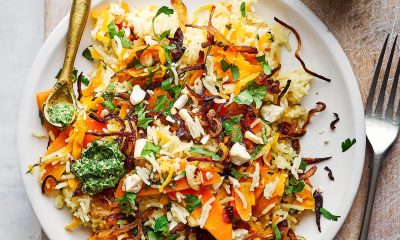
 Health1 year ago
Health1 year ago50 Super Healthy (And Very Often Cheap) Foods
-
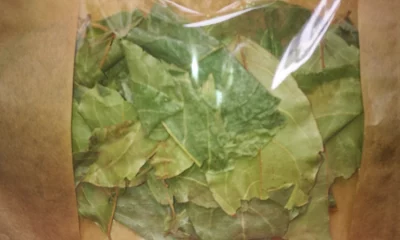
 Health1 year ago
Health1 year ago5 Shocking health benefits of kinkeliba and side effects
-
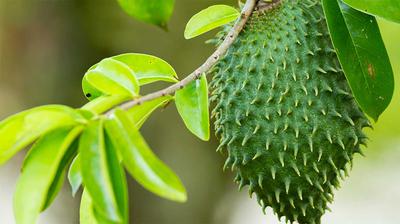
 Health1 year ago
Health1 year ago15 health benefits of soursop leaves tea and side effects
-

 Food1 year ago
Food1 year ago8 shocking benefits of leek juice and side effects
-
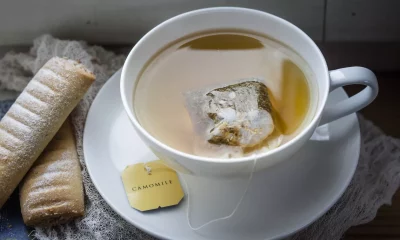
 Health1 year ago
Health1 year ago15 Benefits of lipton tea and side effects
-

 Health1 year ago
Health1 year agoBenefits of guava leaves Sensually



